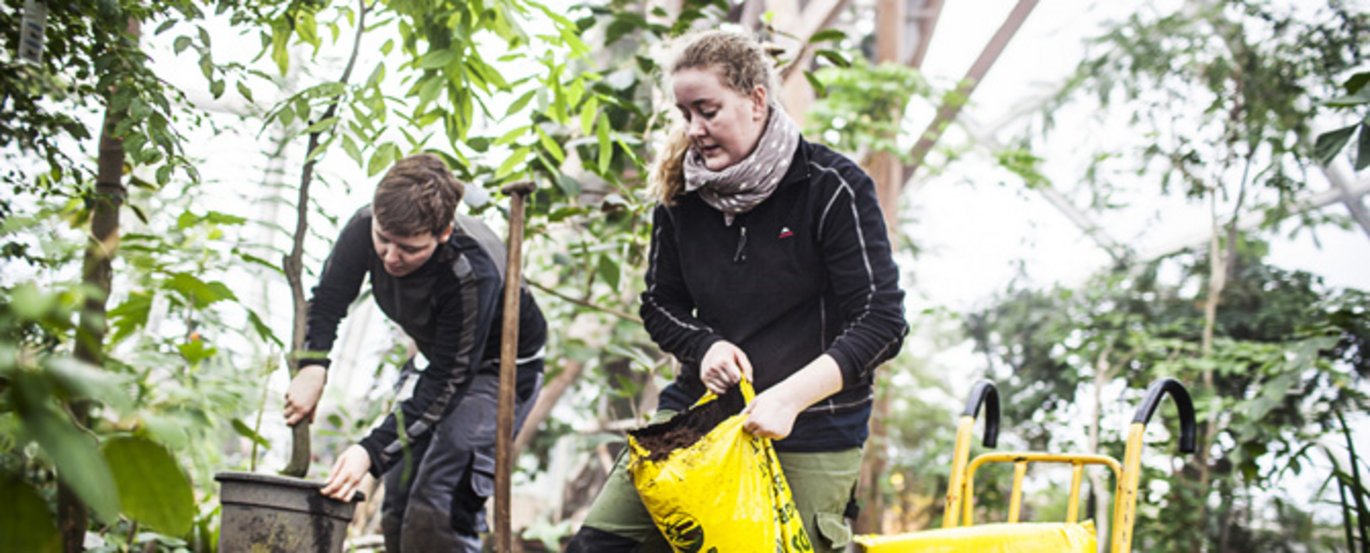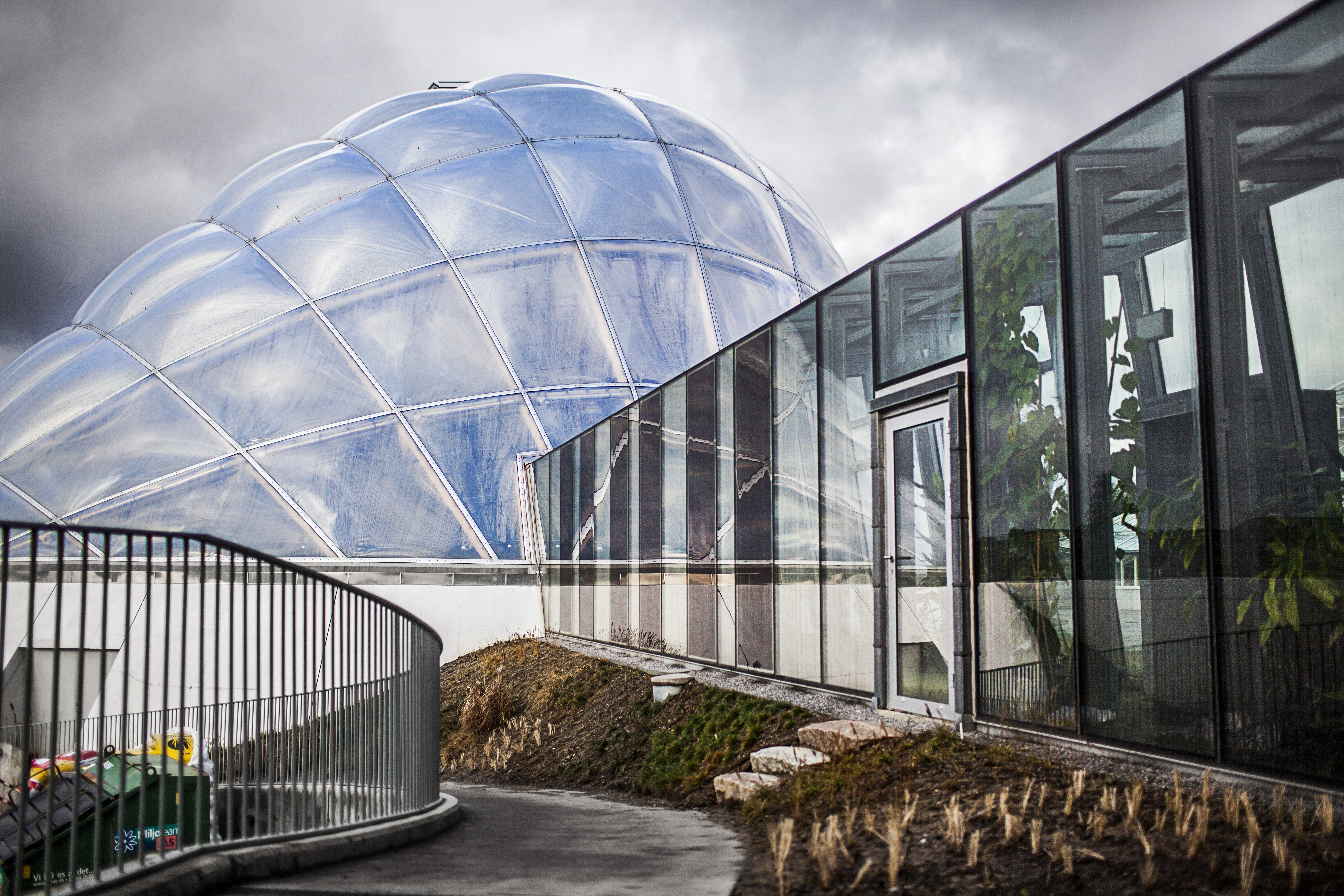Last plants in place before the grand opening of the tropical hothouse
The gardeners are busy putting the finishing touches to the layout of a new tropical hothouse which first officially opens in September. But from 16 April, interested parties can already follow the completion of C. F. Møller’s prize-winning building in the Botanical Gardens in Aarhus.



While most of us need hats, mittens and scarves to keep warm during the winter, the gardeners have been sweating in the new tropical hothouse in the Botanical Gardens.
"We have had to wheel many loads of poor soil out before we could begin planting, and in this tropical heat that makes you sweat," says gardener Helle Brandt.
She explains that the heavy construction machinery used for the construction work had completely ruined the soil in the newly constructed 1,000m2 tropical hothouse. But together with her colleagues - and after many trips with heavy wheelbarrows - she is almost ready for the re-opening of the greenhouses in the Botanical Gardens in Aarhus.
Piranha fish and butterflies
C. F. Møller has designed the 18 metre high building in which one of the main attractions will be a 12 metre high tree tower. From here the visitors will be able to survey all the tropical splendour, including piranha fish in the water basin and butterflies in the treetops.
Comprehensive restoration
In addition to the new building, C. F. Møller was responsible for a comprehensive restoration of three smaller greenhouses designed by the same architects almost 45 years ago. In these greenhouses visitors can experience plants that grow in a Mediterranean climate, the desert and tropical mountains, respectively.
From research to knowledge dissemination
Whereas researchers and students have previously benefited from the many thousands of plants in their research and teaching, in the future the focal point of the activities in the greenhouses will be dissemination of knowledge about botany to interested members of the public.
"There’s been a decline in the use of plants in the greenhouses for research in recent years. One reason for this is that researchers work differently than previously. For example, there is no longer the same need to be able to make plants flower as they have a much closer cooperation with researchers in tropical countries," says programme director, associate professor Finn Borchsenius, from the Science Museums at AU.
Four different continents
Finn Borchsenius has, in cooperation with the employees at the Science Museums, been responsible for the layout of the new hothouse. Visitors will no longer be presented with rows of plants with white name tags full of Latin names that appear to be randomly planted. The plants are now collected in four different continents in the tropical hothouse and the three other greenhouses.
Finn Borchsenius and his colleagues intend to give visitors a coherent experience that let’s them journey through various landscapes and climatic areas.
80,000 visitors expected
The influence of human beings on nature is also part of the narrative; for example, part of the rainforest in the tropical hothouse has been cleared away. Finn Borchsenius expects up to 80,000 visitors a year, and he expects the attractions in the greenhouses to pull-in both school- and upper secondary classes, as well as anyone with an interest in botany.
Visit the greenhouses
The greenhouses are part of the Science Museums at Aarhus University.
Admission is free.
Opening hours: Monday to Friday: 9.00 - 16.00. Weekend: 10.00 - 17.00.
New café opening in connection with access to the plant collections.
Facts
The dome in the new tropical hothouse is made of air cushions constructed from a transparent foil material called EFTE. This material reduces heat loss by isolating in the same way as double-glazing. Other examples of sustainable technologies in the new hothouse include a heat pump system, rainwater tanks and solar heating panels.
Source: C. F. Møller
The Browneopsis disepala plant being planted in the new hothouse by greenhouse gardeners Helle Brandt (left) and Kimi Kvist Larsen (right) is a rare species from Ecuador. After the move into the new hothouse, Helle Brandt planted it in a location where it did not thrive and lost all its leaves. She dug it up and re-planted it in the shade of one of the large palms, and last spring fresh shoots appeared, so now it is getting a new chance in a more central location. (Photo: Jesper Rais)
Translated by Peter Lambourne

